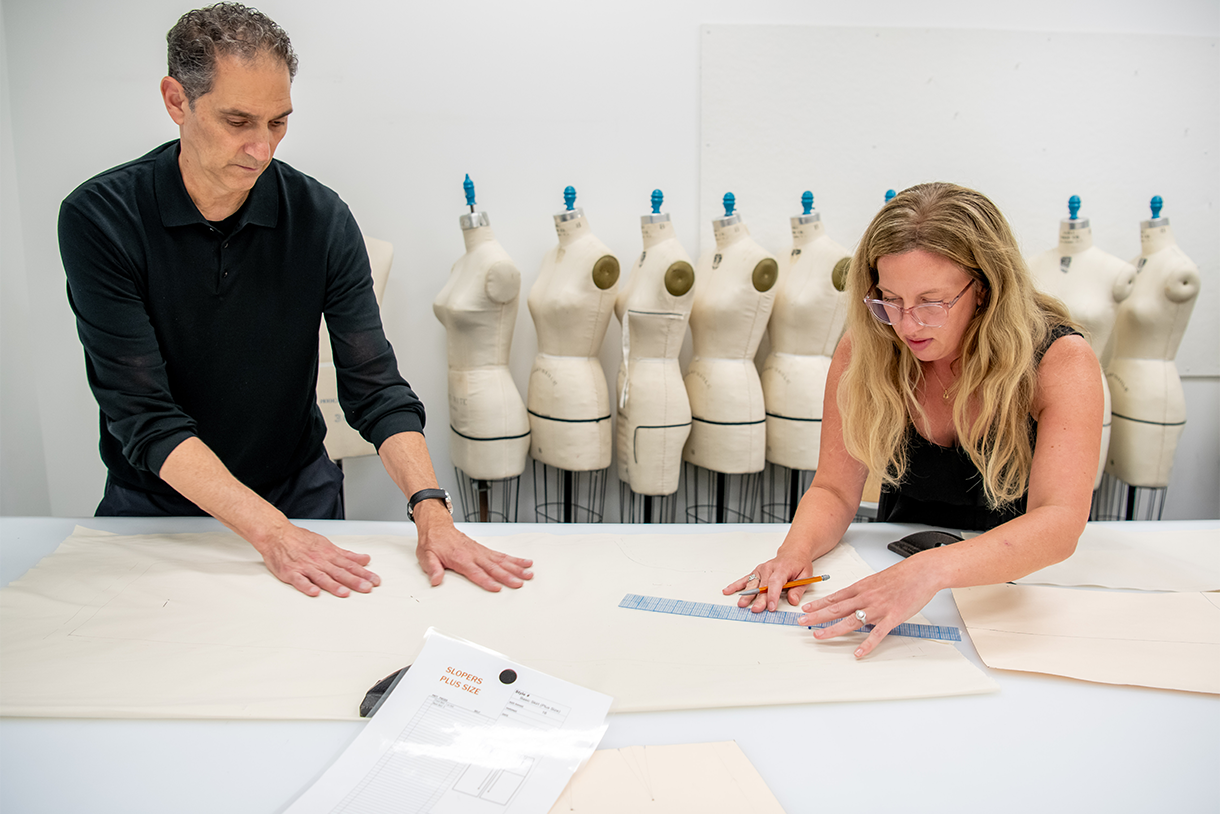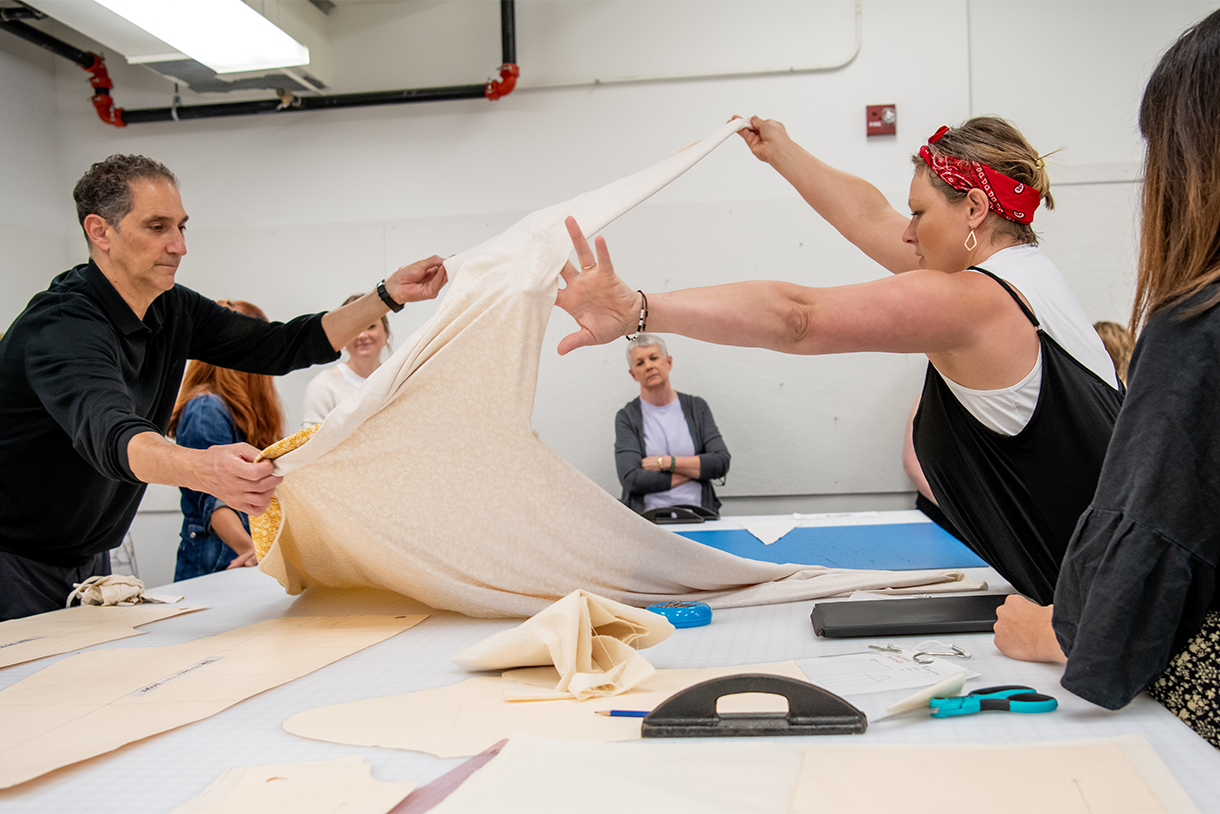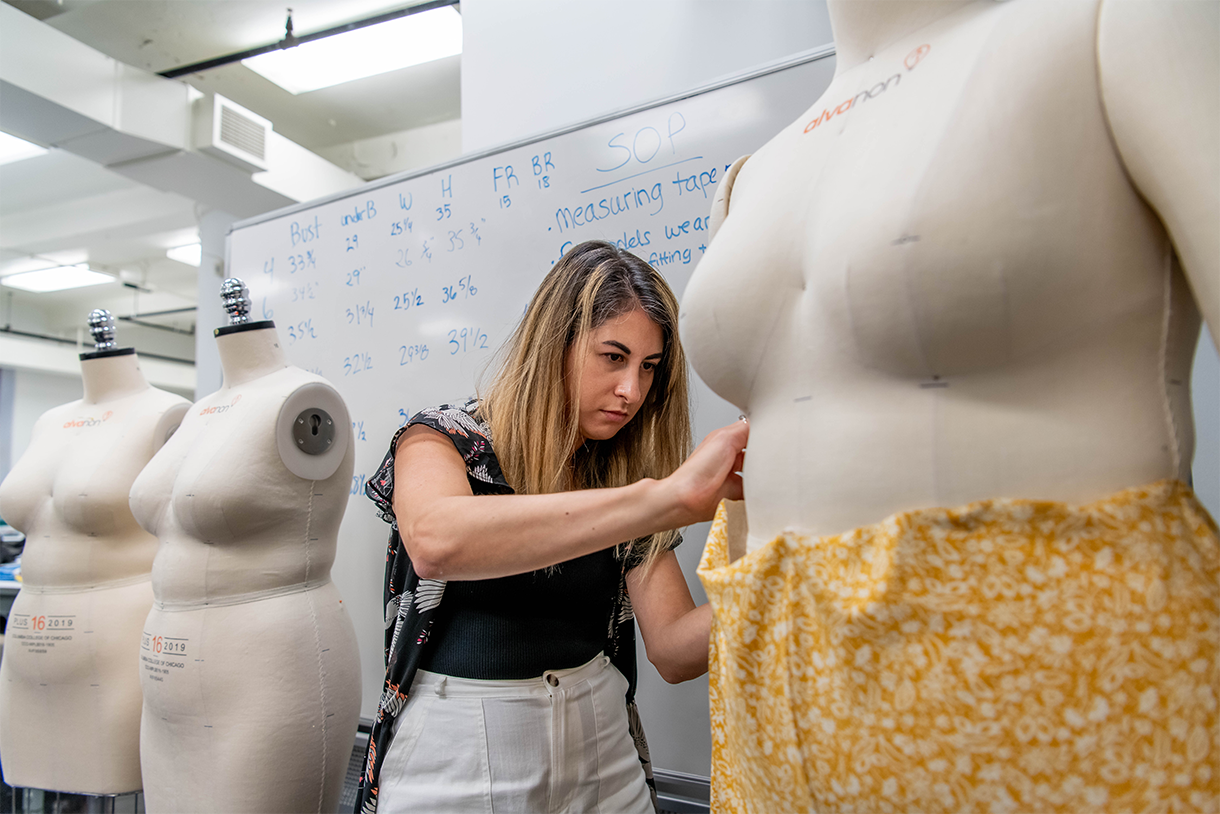Columbia Fashion Studies Symposium Teaches Lessons in Inclusivity
The week of August 14, Fashion Studies hosted a symposium entitled Live Body Fashion. Envisioned by Fashion Studies Chair Colbey Reid, Associate Chair Allison Leahy, and Assistant Professor Lauren Downing Peters, the four-day event was made possible thanks to a grant from the Office of the Provost at Columbia College Chicago.
"Our desire was to bring all of the faculty in Fashion Studies together to get on the same page about what inclusivity means in the fashion industry and how to enact it in the classroom as we train rising professionals,” says Fashion Studies Chair Colbey Reid.
In addition to full-time and part-time faculty from Columbia College Chicago, the department also invited educators from other schools and practitioners in the industry.
“We actually offered workshops on skills that aren't standard in industry but that practitioners want and need to know,” Reid says.
The organizers of the symposium tapped faculty to lead some sessions, including Natalie Craig, a plus-size influencer and adjunct faculty member in Communication; Lisa Gonzales, chair of the Dance department; Darrell Jones, an associate professor in the Dance department; and Reyes Witt, practitioner-in-residence at Columbia.
They also welcomed guest workshop leaders, moderators, and discussion panelists. These included Deb Christel and Ben Barry, co-editors of Fashion Education: The Systemic Revolution; Jimmy Zollo, Joe & Bella; Kate VanAsten, Wulfka; Korri Burton-Universe, Uncommon Closet; Simone Tobias, @simonetobiasswimwear; Amber McCulloch, a plus-size model and blogger; and Jae Rice, Brave Space Alliance as well as Estela Lugo, who has Charcot-Marie-Tooth and has a background in design, marketing, and trend forecasting and teaches inclusive and adaptive design at the Fashion Institute of Technology.
Session topics included fashion inclusivity, plus-size pattern making, 3D software, talking about disability, curve styling, and critical response process.
Reid was thrilled to see nearly full participation from Fashion Studies faculty, both full time and part time. “I think that is remarkable and speaks to the excitement generated by the topics we addressed.”
See the full program of Live Body Fashion for more details.
Recent News
- Alum Patricia Kara’s New Book Offers Behind-The-Scenes Look at the Entertainment World
- Grace Kessler Overbeke to Present The Many Mrs Maisels 20th Century US Jewish Female StandUp Comedians
- ASL Conference Brings High School and College Students Together at Columbia College Chicago
- What to Watch and Where to Wander This Winter: Columbia Edition
- Five Columbia Students Earn Prestigious Fashion Scholarships


